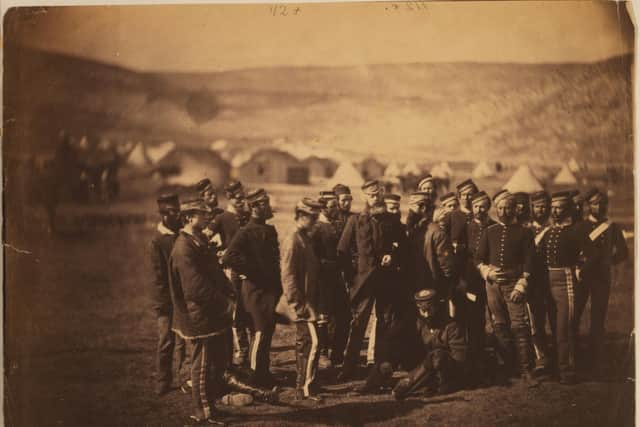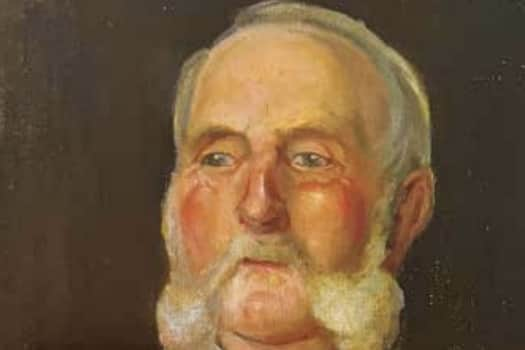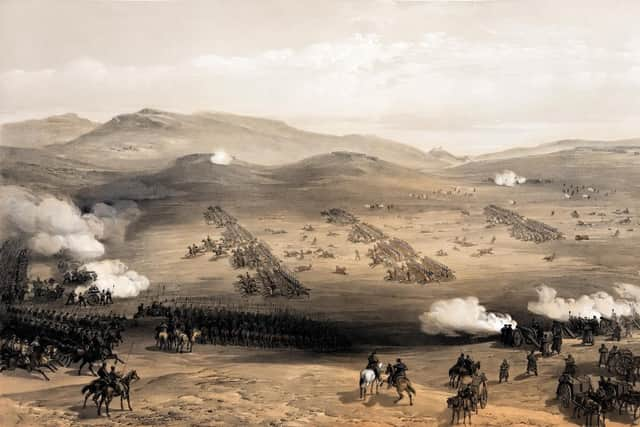Charge of the Light Brigade survivor retired to Portrush
and live on Freeview channel 276
“Half a league, half a league, half a league onward.
All in the valley of Death rode the six hundred.
Forward the Light Brigade!”


The then Poet Laureate’s verses were published within weeks of the Charge of the Light Brigade at the Battle of Balaclava in 1854. Thus, one of the most tragic events in military history was precipitated into the realms of immortality.
The ‘Charge’ was a mistake, the result of misunderstood instructions. The loss of life was appalling. But the bloodied survivors who staggered back to their own lines that October afternoon were rightly hailed as heroes.
Advertisement
Hide AdAdvertisement
Hide AdOne of them was 22-year-old Trooper James Hewitt. He was to survive more military campaigns and live for another 72 years before passing away peacefully in a council house in Portrush. He was one of the very last ‘Charge’ survivors.
Born in 1831 at Ballyshannon, County Donegal, it was no surprise when James chose to become a soldier. Both his grandfathers had fought in Wellington’s army at Waterloo.


He was a few weeks short of his 23rd birthday when he rode with the 13th Light Dragoons into “the valley of Death”. Trooper Hewitt had already taken part in battles at Sebastopol, Alma and Inkerman and been wounded several times.
He was placed in the care of Florence Nightingale - “a terror to the nurses but loved by the wounded”.
Advertisement
Hide AdAdvertisement
Hide AdThe Cavalry Division of the British contingent was commanded by Lieutenant-General the Earl of Lucan, whose brother-in-law, Major-General the Earl of Cardigan, commanded the Light Brigade. The two generals were bitter enemies and barely spoke to each other.
The charge took place at around 2pm on 25 October and was to prevent the Russians from carrying away guns from over-run positions.


The written instruction from Lord Raglan, the British commander, was entrusted to Captain Louis Nolan. Hewitt was close to Cardigan when the order was received. But confusion reigned over which guns were the subject of the order.
Nolan, when asked, gestured towards the valley a mile away. His vague sweep of the hand was incorrectly interpreted.
Advertisement
Hide AdAdvertisement
Hide AdThe Light Brigade, consisting of 673 troopers, set off down the wrong valley. They were unarmoured and carried only lances and sabres. The valley was protected by 20 battalions of infantry and 50 artillery. It was suicidal, but the Light Brigade began the charge without question.
Nolan may have realised the error, for he suddenly rode across the front of the cantering cavalry, probably in an effort to stop the charge. An artillery shell exploded in front of his horse and a piece of shrapnel penetrated his chest. He fell, mortally wounded.
Despite withering fire from three sides and outnumbered five to one, the Light Brigade engaged the Russians and temporarily pushed them back, but was forced to retire, assisted by French cavalry.
Hewitt, on the right wing, saw Nolan fall. Then, as the speed of the galloping horses increased, the sounds of battle took over.
Advertisement
Hide AdAdvertisement
Hide AdThe unequal clash of cavalry against cannon was taking a dreadful toll on the British cavalry. Hewitt fell with a bullet through his left leg. A riderless horse galloped by and he snatched at the leather stirrup. He was dragged, wounded and in agony, back to his own lines.
The battle lasted 20 minutes during which the Light Brigade suffered 40 per cent casualties - out of 673 men, 118 were killed, 127 wounded and 60 taken prisoner. A total of 335 horses died. Marshal Pierre Bosquet declared: “It is magnificent, but it is not war.”
Hewitt, a lifelong teetotaller and non-smoker, remained in the Army for some years. He returned to Ireland in 1910 and settled in County Tyrone but later came to 15 Hamilton Place, Portrush. He died on 19 July 1926, aged 94.
Members of the British Legion paraded at his funeral and formed a firing party at the graveside at Ballywillan Cemetery. Sadly, his grave is unmarked.
Advertisement
Hide AdAdvertisement
Hide AdOn 18 May 1927, ten months after James Hewitt’s death, the very last survivor passed away.
Edwin Hughes was 96 and, like Hewitt, a trooper in the 13th Light Dragoons.
Our thanks go to Dr Michael Thompson for obtaining permission to reproduce Hewitt’s portrait by Belfast artist Kathleen Isabella Metcalfe Mackie (1899-1996).